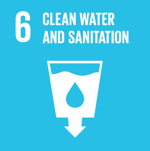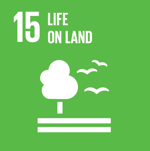Organic production systems in the Southern Cone
 Chile
Chile
 Argentina
Argentina
 Bolivia
Bolivia
 Brazil
Brazil
 Colombia
Colombia
 Paraguay
Paraguay
 Uruguay
Uruguay
Executive Summary
The objective was to identify, systematize and validate successful organic horticultural and fruit production processes with market potential. With this objective in mind, 7 species (blueberries, cocoa, coffee, onion, mango, tomato, and grapes) were selected in the participating countries (Argentina, Bolivia, Chile, Uruguay, and Paraguay) and the organic production systems of the two-species corresponding to each country were validated and publicized. The work was done under a participatory research methodology, where decision-making was carried out jointly between researchers and producers.
The project generated a database of successful organic producers in the countries involved, which contains information regarding the general characteristics of the farm, composition and characteristics of the family group, production systems, climate conditions and overall environmental characteristics, soil and fertility management, pest, disease and weed management, crop management and marketing potential and limitations.
Dissemination activities in all countries (field days and seminars) were a highlight, including the design of a Web page for general project information and the publication of the bulletin "Sustainable Organic Productive Systems in Argentina, Bolivia, Chile, Paraguay and Uruguay", which was distributed in the project closing seminars, held in the five countries.
The technological solution
The project set out to technically characterize two successful organic production systems in agricultural areas with economic potential for each participating country, identifying critical points and success factors of the most effective organic production and management technologies. The focus was on participatory research where producers had an active voice throughout the initiative.
In this framework, the technological solution consisted of a deep diagnosis and analysis in a sample universe in the participating countries. The central products generated are economically viable technological proposals for the production of agricultural goods aimed at organic product markets. Additionally, the proposals were geared to promote and stimulate the incorporation of new areas to organic production.
Results
The inclusion of farmers in the study was based on three criteria: continuous organic production for at least 3 years without having returned to conventional agriculture; sufficient income to support their family and feeling of satisfaction with their own management. The information analyzed indicates that organic agriculture is very well suited to rural family agriculture, both in cultural and socio-economic terms. The economic margins are higher in some crops, such as the organic tomato, generating differences between producers even within the same country.
Despite the differences between countries and between crops, there is great similarity among the experiences of organic producers in the Southern Cone if key factors for success are considered:
- soil management and use of fertilizers produced in the farm
- preventive pest and weed management practices based on monitoring
- adequate disease control
- greater involvement of the family head and family group in the production process
- reduce the percentage of losses
- upgrade in capacity building (training)
- higher levels of association between organic producers
- local and non-local market opportunities
Beneficiaries
The goal of the project was to disseminate the results to a universe of 8,000 farmers and technicians and to train at least 200 producers and 125 technical advisers. To do this, a dissemination plan was structured with the preparation of a website, field days, workshops and seminars. The literary production (publications and reports of various kinds) was very significant, it included the publication of a book recounting the complete experience of the project with a circulation of 1,000 copies
Sustainable Development Goals



Participating Organizations
Executor
- Instituto de Investigaciones Agropecuarias (INIA) - Chile
Co-executor
- Instituto Nacional de Tecnología Agropecuaria (INTA) - Argentina
- MDRAyMA - Bolivia
- DIA - MAG - Paraguay
- Instituto Nacional de Investigación Agropecuaria (INIA) - Uruguay
- Empresa Brasileña de Investigación Agropecuaria (EMBRAPA) - Brasil
- Programa Cooperativo para el Desarrollo Tecnológico Agroalimentario y Agroindustrial del Cono Sur (PROCISUR) - Uruguay
- International Center for Tropical Agriculture (CIAT) - Colombia
Graphics and data
Financing by country (in USD)


































